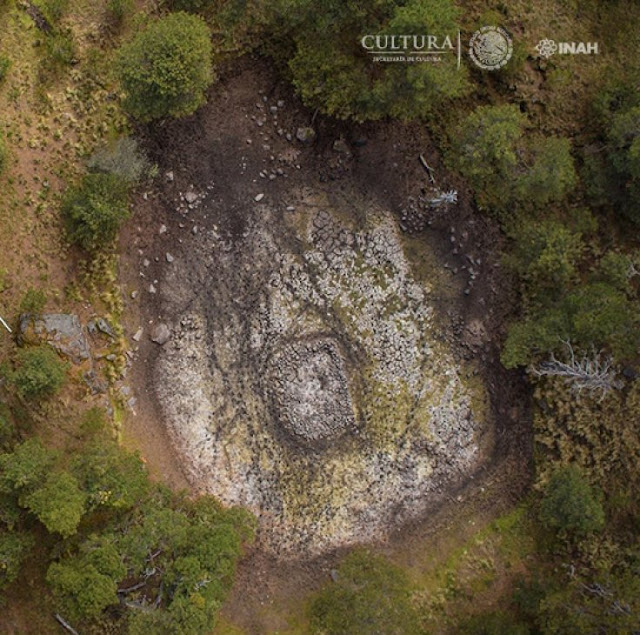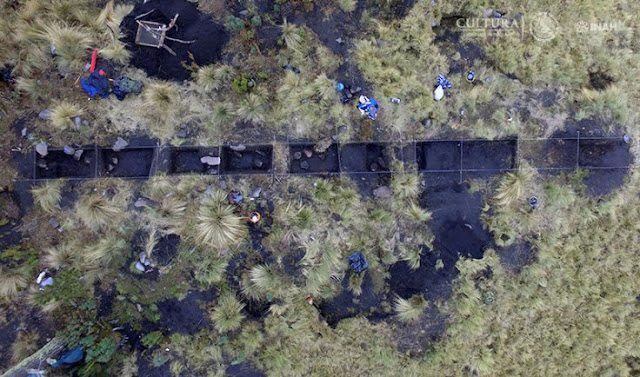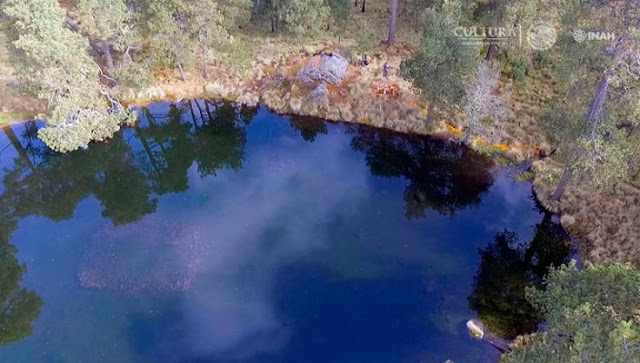A team of archaeologists in Mexico have discovered a stone shrine in a pond that depicts the design of the universe, as imagined by ancient Aztec civilisations. The stone "tetzacualco" or sanctuary was found at Nahualac, a site at the foothills of the Iztaccihuatl volcano.
 |
| Aerial view of the tetzacualco (shrine) after water was drained out of the lake [Credit: Isaac Gomez/INAH] |
The researchers have surmised that the placement of the stones is meant to portray a miniature model of the mythical universe. The placement itself creates the effect of making it seem like the stones are 'floating' on the water's surface rather than lying on the pond bed.
 |
| Archaeologists discovered artifacts associated with the Aztec rain god Tlaloc at the Nahualac site in Mexico [Credit: Isaac Gomez/INAH] |
Archaeologist Iris del Rocio Hernandez Bautista, who is from the Subaquatic Archeology Subdirectorate (SAS) of the INAH, pointed out that according to Mesoamerican creation myths, the world was devoid of any land. Cipactli (the monster of the earth) floated on the primitive waters and from his body, the sky and the earth were created.
 |
| Researchers excavate remains of artifacts associated with the Aztec rain god Tlaloc [Credit: Isaac Gomez/INAH] |
"These visual effects, in addition to the characteristics of the elements that make up the site and the relationship they have with each other, make us suppose that Nahualac could represent a microcosm that evokes the primitive waters and the beginning of the mythical time-space," she said.
 |
| Aerial view of the pond at Nahualac in Mexico [Credit: Isaac Gomez/INAH] |
"In this area, ceramic materials were identified on the surface, some of them identified as Coyotlatelco (750-900 AD), Mazapa (850 to 900 AD) and Tollan Complex (900-1150 AD). Altogether, the archaeological evidences cover an approximate area of 300 by 100 metres," Bautista added.
Author: Lara Rebello | Source: International Business Times [January 04, 2018]
